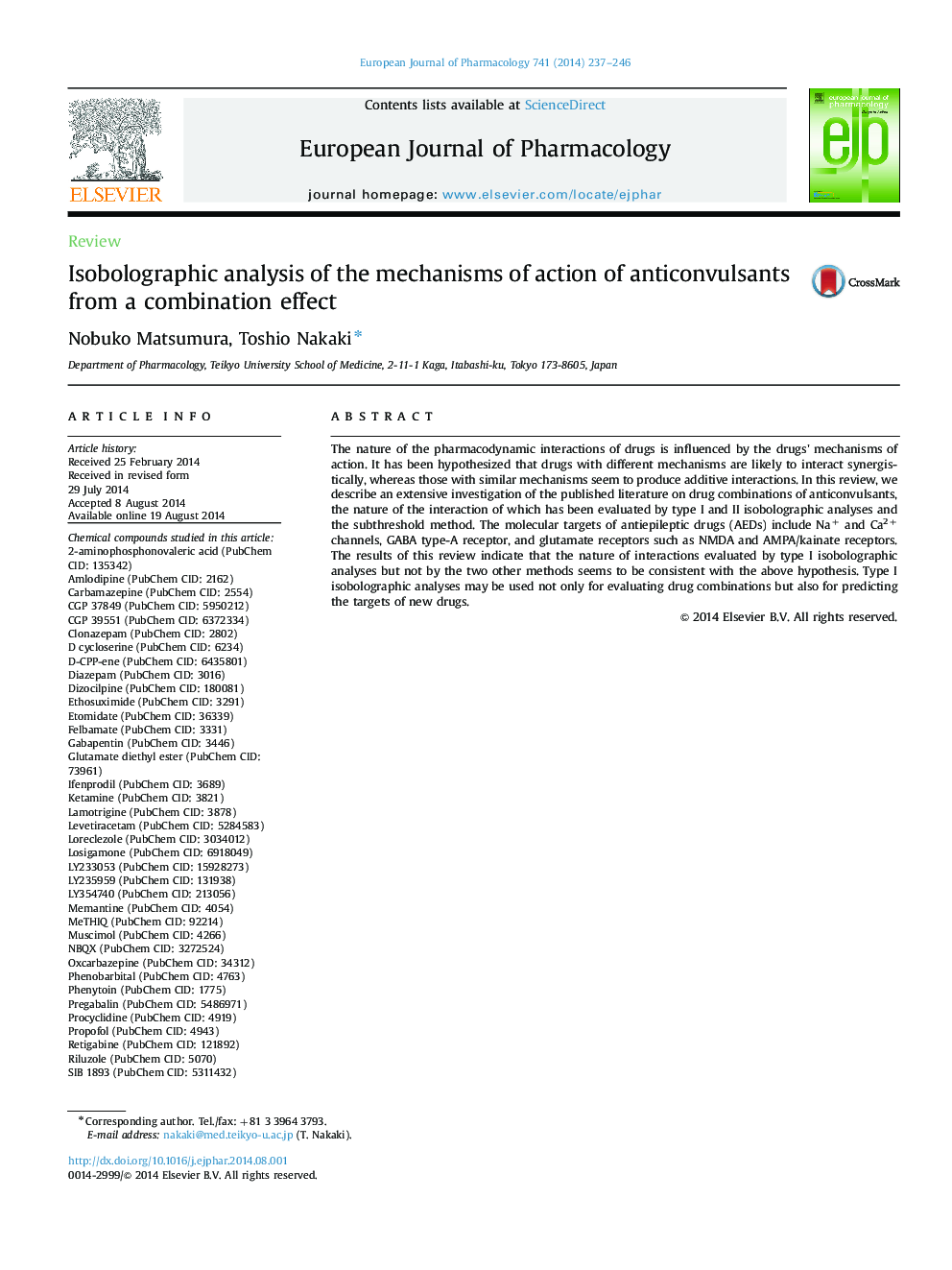| Article ID | Journal | Published Year | Pages | File Type |
|---|---|---|---|---|
| 5827609 | European Journal of Pharmacology | 2014 | 10 Pages |
Abstract
The nature of the pharmacodynamic interactions of drugs is influenced by the drugs׳ mechanisms of action. It has been hypothesized that drugs with different mechanisms are likely to interact synergistically, whereas those with similar mechanisms seem to produce additive interactions. In this review, we describe an extensive investigation of the published literature on drug combinations of anticonvulsants, the nature of the interaction of which has been evaluated by type I and II isobolographic analyses and the subthreshold method. The molecular targets of antiepileptic drugs (AEDs) include Na+ and Ca2+ channels, GABA type-A receptor, and glutamate receptors such as NMDA and AMPA/kainate receptors. The results of this review indicate that the nature of interactions evaluated by type I isobolographic analyses but not by the two other methods seems to be consistent with the above hypothesis. Type I isobolographic analyses may be used not only for evaluating drug combinations but also for predicting the targets of new drugs.
Keywords
Related Topics
Life Sciences
Neuroscience
Cellular and Molecular Neuroscience
Authors
Nobuko Matsumura, Toshio Nakaki,
